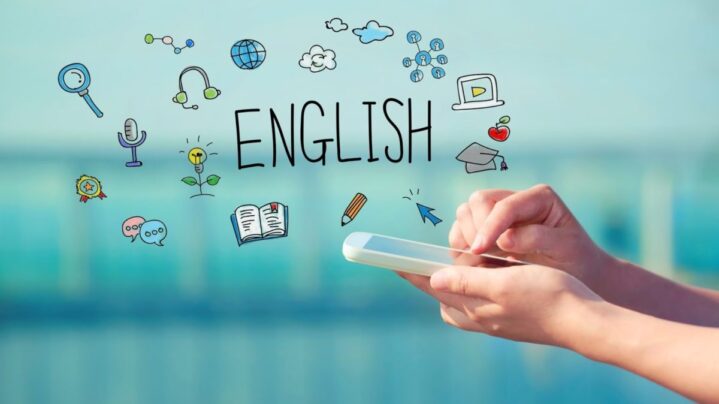
6 essential strategies
ENGLISH-LANGUAGE LEARNERS
An excellent article kindly reprinted from edutopia – the George Lucas educational programme that is just so relevant to Thailand
6 essential strategies for teaching English language learners
We interviewed educators with decades of experience in teaching ELLs and tapped a network of experts and observers to find the strategies that work.
by Emily Kaplan
Over 10% of students in the United States – more than 4.8 million kids – are English language learners (ELLs), and the number is on the rise. Though these students do not learn differently than their native English speaking peers, they do have particular educational needs.
To learn about these needs – and best practices for addressing them – I interviewed a range of educators and observers, including Larry Ferlazzo, an educator and author of The ESL/ELL Teacher’s Survival Guide; longtime teachers of English as a second language (ESL) Emily Francis and Tan Huynh; and the journalist Helen Thorpe, who spent a year observing a teacher who works with ELLs.
The group emphasised that the strategies listed here, which include both big picture mindsets and nitty-gritty teaching tactics, can be incorporated into all classrooms, benefiting both native English speakers and ELLs.
- Cultivate relationships and be culturally responsive
No surprise here. A successful classroom, our educators agreed, is one in which students feel known, appreciated, and comfortable taking emotional and intellectual risks. That requires intentional planning and consistent messaging by the teacher.
Emily Francis, an ESL teacher in Concord, North Carolina, makes clear that she wants her students to “embrace their culture and their language as a foundation of who they are” and to consider their acquisition of a new culture and language “not as subtractive, but as additive.” To help support students who may never have attended school before or may be coping with migration based trauma, Francis emphasises that little things make a big difference. “The first thing that I need to think about is, how is my student feeling in my classroom?” she says. “Are they sitting next to a buddy they can ask a question in their home language? Do they feel comfortable tapping me on the shoulder if they have to go to the bathroom?”
But creating a supportive environment is also about cultivating an appreciation of diversity – it’s critical that both the curriculum and the classroom environment honour and reflect the lives of the students. For instance, Francis makes certain that her classroom library is reflective of her students’ diverse backgrounds and identities.
ESL teacher Katie Toppel, who teaches near Portland, Oregon, champions the value of home visits to get to know students’ families and takes care to incorporate the particulars of students’ lives, such as pets’ names and favourite sports, into lessons. Students are most engaged when they feel a personal connection to a lesson or unit, a connection that’s created in part by a teacher’s investment in culturally competent relationships.
- Teach language skills across the curriculum
English language learners should not be learning the fundamentals of English in isolation; they should be applying their developing language skills to rich academic content in all subjects.
“It is key that in mainstream classrooms, teachers understand their role as language teachers,” says Valentina Gonzalez, a district leader in Katy, Texas, suggesting that all teachers should be aware of the specialised idiom they work within. “If we teach math, then we teach the language of mathematics. If we teach science, then we teach the language of science.” Math teachers, in other words, should take the time to teach the unfamiliar vocabulary of mathematics – add, subtract, calculator, solve – concurrently with the teaching of math skills.
- Emphasis productive language
The educators I interviewed agreed that productive language skills – hard-to-master dimensions of language fluency like speaking and writing – should be front and centre from day one, even if students feel hesitant about them.
Beginning ELLs often develop receptive language skills like listening and reading first. Educators who are unaware of the typical path to fluency may believe that students who can follow verbal or written directions will be able to produce oral or written language, but that’s usually not the case.
To support reluctant speakers, Tan Huynh, an educator who blogs at Empowering ELLs, suggests using sentence frames. “For example, when a science teacher wants ELLs to produce a hypothesis, they might offer the sentence, ‘If _____ was added, then _____ because _____.’ This sentence frame provides clues that empower ELLs to sound and think like scientists,” Huynh says.
Andrea Honigsfeld, a professor of education at Molloy College in Rockville, New York, suggests that all lessons touch on every letter of the acronym SWIRL, which stands for Speak, Write, Interact, Read, Listen. The approach intentionally privileges productive language skills “from the beginning,” she says.
- Speak slowly – and increase your wait time
Easier said than done. Still, many of the teachers I spoke to said this simple change is vital. You can record yourself speaking in class to measure your cadence, and adjust.
“Adding in an extra three to five seconds after we pose a question offers all students time to think,” explains Gonzalez. “However, for English learners, it also gives time to translate, process their thinking, translate back into English, and develop the courage to answer. If we call on students too quickly, many of our students will stop thinking about the answers – or trying to answer at all.”
That means undoing some of our own habits, according to Larry Ferlazzo, a high school ESL teacher in Sacramento, California. “Researchers have found that typically most teachers give one to two seconds between asking a question and expecting a student response,” he says. “The same researchers have shown that if you wait three to five seconds, the quality of responses is astronomically greater.”
- Differentiate – and use multiple modalities
All kids learn better when they engage with material in multiple ways: Lessons that involve writing, speaking, drawing, and listening, for example, give students four opportunities to deepen their understanding of the work. For ELLs, those additional engagements also provide a little breathing room so they can work through the language barrier.
Helen Thorpe, a journalist who spent a year observing Eddie Williams’s classroom in Denver in order to write a book about immigrants called The Newcomers, marvelled at Williams’s method of differentiation. “Eddie would enunciate very clearly in English multiple times, he would write it on the board, and he would go to the projector to give a visual. And, finally, he’d be asking the kids to verbalise aspects of the lesson themselves,” she says, tracing Williams’s efforts to move his students from receptive to productive language fluency.
Toppel uses a strategy called QSSSA to scaffold classroom discussions with ELLs. The letters stand for Question (the teacher poses a question, then gives ample think time); Signal (a designated motion like a thumbs up, a finger on the nose – something that lets students indicate that they’re ready to answer); Stem (the teacher provides a sentence starter for the question – for example, for “What is your favourite place to read a book?” the stem might be, “My favourite place to read a book is _____”); Share; and Assess.
- Incorporate students’ native languages – and do not be afraid of technology
Bilingualism is the goal, of course, not replacement.
Ferlazzo uses a strategy called “preview, view, review,” which leverages a student’s native language skills as a foundation for learning the new language. He introduces a topic and encourages students to preview it in materials in their home language (often using multilingual videos and other online resources); he then teaches the topic in English, and then has students review the information in their home language.
Ferlazzo also encourages teachers to embrace technologies that students find helpful, like Google Translate. He stresses that the app can be a useful way for students to translate words quickly—but warns that it can quickly “become a dependency” if it is used as more than a handy dictionary.
Thorpe agrees that Translate can take pressure off teachers, who sometimes find that they “just stand at the front of the room and say things over and over. And if the kids did not know what those words are, they are out of luck.” Translation technology means you can say it once (or twice) and let the students use the technology to translate key words and phrases.



